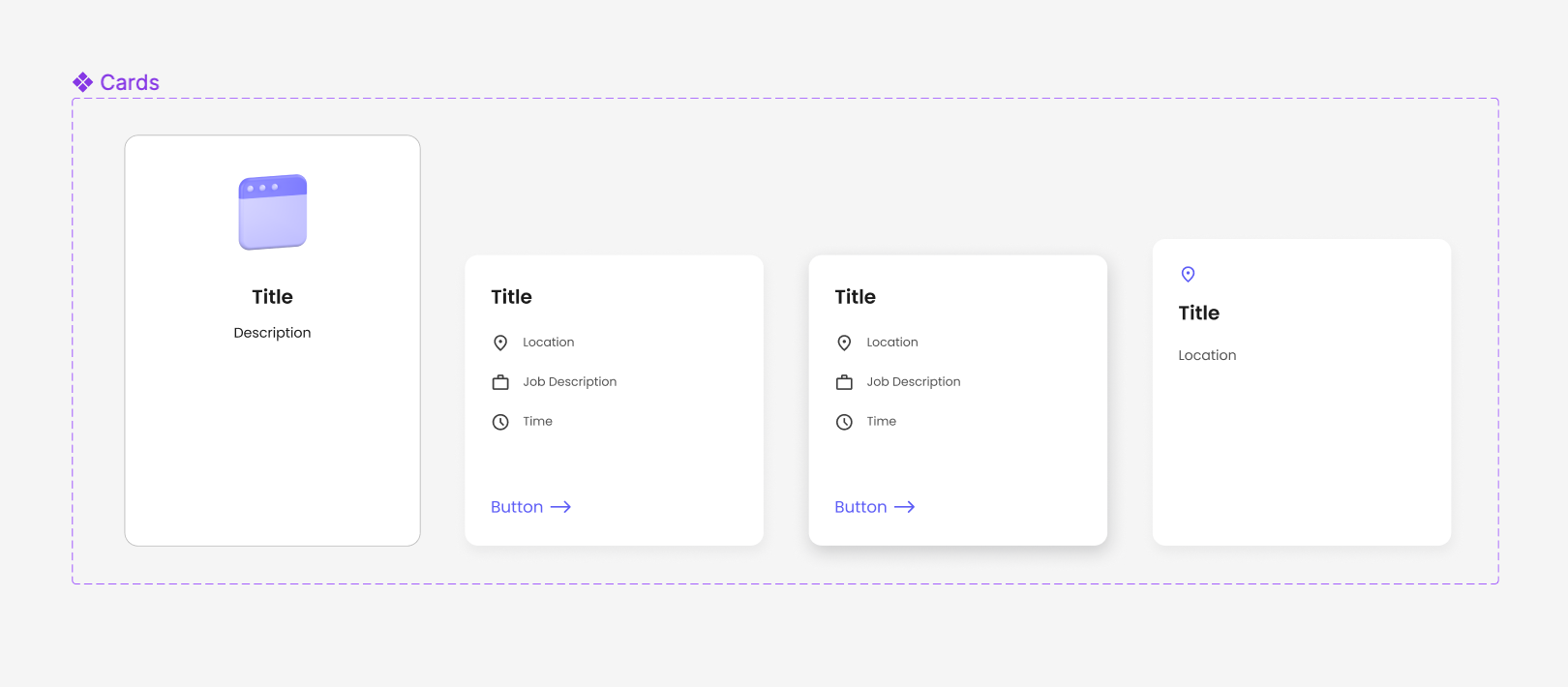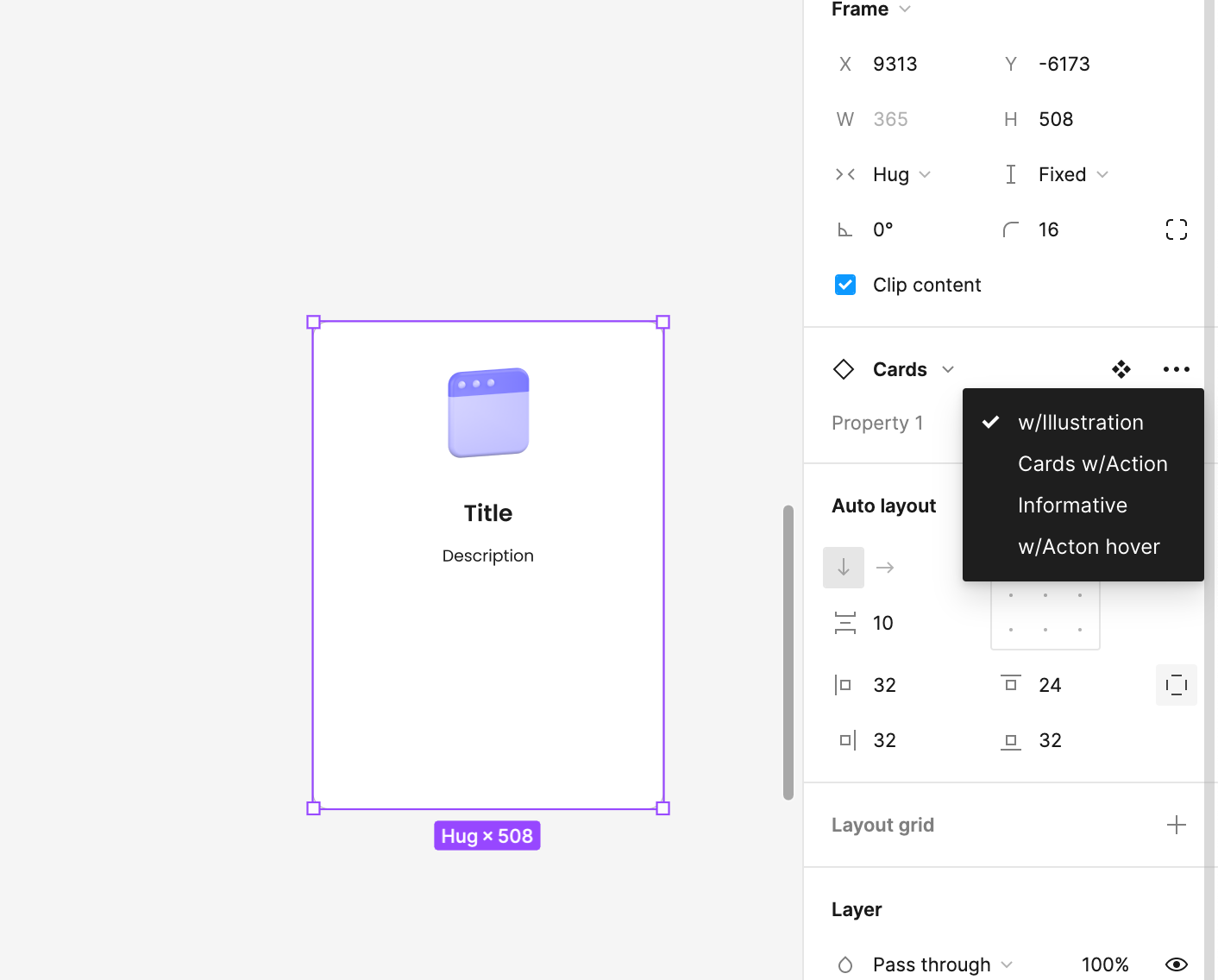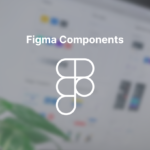10 Essential Figma Components for Revolutionary Design: Get a Boost!
Let’s start with Figma Components 101
Componentization [referring to components] is an approach to software development that involves breaking software down into identifiable and reusable pieces that application and web developers can independently use, build and deploy in the products they’re working on.
Componentization in Figma comes as a design system feature that allows designers to create reusable elements in their designs. Not only for them, but also for devs! This helps to maintain consistency and efficiency along the design process.
Figma components can be anything – from buttons and icons to entire pages or templates. When a Figma component is updated, the changes of that component are fully-reflected in the design file.
This helps to streamline the design process and reduces the amount of manual work needed to keep designs consistent and up-to-date. So, why wait? Just try it and enhance your team’s workflow.
A Design System Feature That Boosts Reusability
What’s the T when using Figma components? It’s cloud-based and it has been gaining popularity due to its intuitive interface and collaborative features. One of its most powerful features is Componentization. This concept comes from the use of Figma components, so first let’s get down to the basics…
Figma Components are pre-designed elements that can be reused multiple times in a design project. They can be anything from a simple button to a complex navigation bar, and can be edited in one place and updated in all instances.
Let’s go over some examples of Figma components.
To create a button in Figma is a simple process. Just follow these steps and let magic happen:
- Create a new frame: do this by selecting the “Frame” tool from the left-side panel and dragging it onto the canvas.
- Add a rectangle shape: do this by selecting the “Rectangle” tool from the left-side panel and dragging it onto the canvas.
- Adjust the size and color: do it to the desired size for your button. Then, change the color of the rectangle to match your desired button color, mind the design!
- Add text: select the “Text” tool from the left-side panel and type in your desired button text. You can adjust the font, size, and color of the text to match your desired button design.
- Group the elements: do it by selecting both elements and right-clicking to select “Group”. This will create a single button component that can be easily reused and adjusted.
- Save as Figma component: To make it reusable, right-click the grouped elements and select “Create Component”.
Tip: You can then save the component to your Assets panel for easy access in future projects. And, you can also add additional design elements or adjust the shape and design of the button to meet your specific needs.
To create a complex navigation bar in Figma as a component involves several steps, but no worries! The process is straightforward. Follow these steps to rock it:
- Create a new frame: do this by selecting the “Frame” tool from the left-side panel and dragging it onto the canvas.
- Add a rectangle shape: do this by selecting the “Rectangle” tool from the left-side panel and dragging it onto the canvas.
- Add text for the navigation items: to each of the rectangles to represent the navigation items. Select the “Text” tool from the left-side panel and type in.
- Group the elements: Group the rectangle and text elements together for each navigation item.
- Create Figma component: right-click the grouped elements and select “Create Component”. Save the component to your Assets panel for easy access in future projects.
- Repeat for all navigation items: Repeat the steps for all navigation items in your bar.
- Arrange navigation items components in the desired order to create your navigation bar. You can do this by selecting each component and adjusting its position.
- Style the navigation bar: Add additional elements and adjust it to meet your specific design needs. Add background colors, borders, shadows, and other design elements as desired.
Remember to follow a well-thought design! You can create a complex navigation bar as a Figma Component. Adjust the design and style of the navigation bar to meet your specific needs and preferences.
Design System [Figma Components] – Effectus Web

So, How Does Figma Components Work?
To create any Figma Component, you simply need to select the elements you want to reuse and click “Create Component” in the right-hand panel. The Figma component will then be saved in the Assets panel, where it can be easily found and reused in other products.
We know it’s redundant, but remember this asset: once you have created a Figma component, you can make changes to it in one place and those changes will automatically be reflected in all instances of the Figma component.
For example, if you change the color of a button Component, all instances of the button in your design will automatically update to the new color, even the code behind it! If you want to check it, just look into Figma’s Help Center.
Even though it may seem that understanding the basics is enough, you should always go one step further to become an expert in Figma Components. Get it, learn it and sound like a Pro in your next weekly [Want to explore Scrum? Or become a Scrum Master?] or any methodology you apply at work. Some key concepts:
Consistency: Figma components ensure that designs are consistent and uniform throughout a project. This is especially important for larger projects with many pages and elements, as it can be difficult to keep track and ensure consistency without a system in place. So, Figma offers it.
Efficiency: Componentization saves time by allowing designers to reuse and share elements instead of recreating them every time they are needed. It comes handy for repetitive elements such as buttons, icons, and headers.
Collaboration: Figma components can be shared with team members and easily updated, making it easy for designers to collaborate and work together on a design project. And let’s be honest, we do need some help to work collaboratively.
Responsiveness: Components in Figma are responsive, only if you create an autolayout. Meaning that they automatically adjust to different screen sizes and device types. This facilitates designers by not having to manually adjust each instance of the Figma component.

Watch the video to see how the Figma Autolayout work!
Autolayout Effectus web Example
Design System Creation: Componentization in Figma can be used to create a design system, which is a set of standardized design elements and guidelines for a company or project. This helps to ensure consistency, quality and branding in designs. Set the frame!
All in all, componentization helps to streamline the design process and make it easier for designers, owners and managers to work together, following the same line-of-thought. If you’re a Figma user, we highly recommend taking advantage of this feature [Figma components] to improve your teamwork workflow.
At this stage, you know that it enables you to create UI elements and promote consistency in whatever design you’re working on, you can also explore these design kits. But still, there are some profitable aspects about Figma components that will scale your team’s product development:
Dynamic Properties: Figma components can have dynamic properties, such as auto-resizing and responsive behavior, that automatically adjust based on the content they contain. Images and clicks
Variants: it allows you to create multiple variants of a Figma component, each with its own unique set of styles and properties. This makes it easy to create different versions of a UI element without having to recreate it from scratch. Images and clicks?
Speed: Using Figma components can greatly speed up the design process, as designers can easily create new UI elements by using existing Figma components as building blocks. Images and clicks?
After all is said and done, Figma’s componentization features allow designers to create and maintain high-quality designs, making it a valuable tool for UX and UI design and therefore, the product! If you want to keep exploring UX and UI, just click here!


Watch the video to see how the Figma Variants work!
Effectus Web – Figma variants – Card component
4 Best Practices for Implementing Figma Components
Check these tips to improve your workflow!
Dynamic cards: Figma components can be used to create dynamic cards that automatically adjust based on the content they contain. For example, a component for a product card could be set up to automatically adjust its height based on the length of the product description.
Global color palette: Designers can create a component for a color palette and reuse it across multiple pages and documents, making it easy to maintain consistency in the use of color throughout a design. Having a thought designed palette that is congruous with the product has a deep impact on the user.
Icon library: Designers can create a component for an icon library and reuse it across multiple pages and documents. It reduces the time spent on searching for and inserting icons. Go for these Figma components.
Modal windows: These Figma components can be used to create reusable modal windows that can be triggered by buttons or other UI elements.
By leveraging the power of componentization, designers can work more efficiently and effectively, focusing on creating high-quality designs.
Maximizing Efficiency with Figma Components: A Case Study
Picture the following scenario in your mind: you’re designing an e-commerce website and you want to create a product card for each item for sale. You can create a Figma component for a product card that includes the product image, title, description, and price.
What’s the best part of it? For each product you can simply create an instance of the product card component and fill in the relevant information you need in each case.
So, let’s cut to the chase: using Figma components lets you ensure that each product card has a consistent layout, style, and color palette, maintaining the overall look and feel of your design. Remember, minding the design is crucial for us!
Here are three real-world examples of how Figma componentization has been used to streamline the design process and improve overall design quality, but first visit Effectus Website to see Figma’s components in a product, use it as an inspiration, and become your team’s A-level designer:
Reusable UI Libraries: One of the most popular uses of Figma componentization is creating reusable UI libraries that can be shared across multiple projects or teams. This allows designers to work more efficiently by using pre-existing UI elements. No need to start from scratch.
Design System: Figma components can be used to build a design system, which acts as a single source of truth for a company’s design standards, guidelines, and assets. A design system allows teams to work collaboratively on design projects, helps reduce the number of design errors. Mind the Brand!
We can’t deny the role AI has nowadays. So, let’s embrace it as a tool to enhance our processes and keep on learning. Can it be used to enhance Figma components? No doubts!
Component suggestion and generation: AI can analyze the design patterns in your Figma files and suggest new components or generate them automatically, based on best practices and design standards. Here you’ll find some examples:
- Image recognition: AI can use computer vision techniques to analyze the visual elements of your designs and identify patterns and similarities between them. For example, it can recognize that several buttons have a similar shape or color scheme, and suggest a new component that follows those patterns.
- Natural Language Processing (NLP): AI can also analyze the text in your designs to identify common patterns and suggest new components. For example, if several pages in your design have a similar header or footer, it suggests a new component for that section of the design.
- Machine learning: used to analyze the design patterns in your Figma files and suggest new Figma components based on those patterns. For example, it can learn from your existing designs to identify reps and suggest new Figma components.
- Rule-based systems: use rule-based systems to analyze your designs and suggest new Figma components based on standards and best practices. For example, checks that new components follow accessibility guidelines, and other design principles.
In order to implement these techniques, you may need to use a third-party plugin or tool that integrates with Figma. Some examples of such tools include Sigmind.ai, Humaaans, and Sketch2React.
Extra bonus on how AI can come in handy!
- Design validation and optimization: AI can analyze your Figma designs to identify potential issues or inconsistencies, and suggest optimizations that improve accessibility, performance, or user experience.
- Asset management and version control: AI can help manage your Figma components by automatically tagging and categorizing them, detecting duplicates, and versioning them over time, making it easier to collaborate and maintain design consistency.
- Intelligent prototyping: AI can suggest interactions, animations, and transitions for your Figma components, making it easier to create realistic prototypes with minimal effort.
- Accessibility and usability testing: AI can provide automated feedback on the accessibility and usability of your Figma components, flagging potential issues and suggesting solutions that improve the overall quality of your designs.
There are several AI-powered tools and plugins available in the market that can help you achieve these benefits. You can explore and evaluate the tools based on your requirements and goals to choose the one that fits your needs.
Do you feel like navigating through AI? Check our post on the Role of AI in the Industry.
Could we twist your arm then? Be ready to excel at using Figma Components and most importantly avoid the risk of design inconsistencies. Check more Figma tips here!
Don’t underestimate the role of Figma components in the process of collaboration, prototyping, and handoff to development. Hand in a polished and thoroughly triple-checked design that shows the knowledge, enthusiasm and talent behind it!






Leave a Reply
You must be logged in to post a comment.